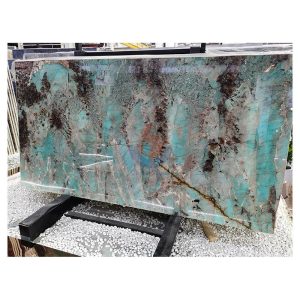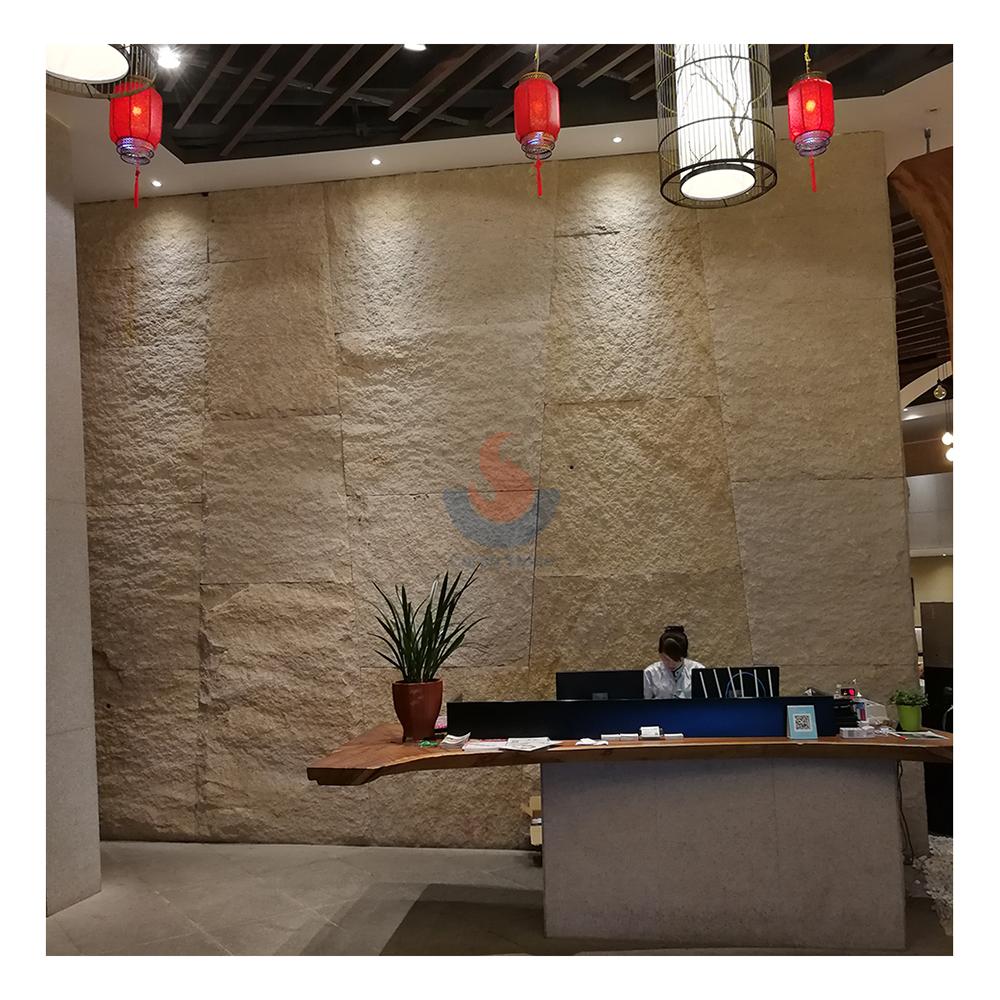In the world of home improvement, granite countertops have won the favor of many families with their unique texture and long-lasting durability. Granite counters, with their traditional elegance and amazing wear resistance, have made a lot of highlights in our life whether in the bathroom or the kitchen. But have you ever considered how these exquisite granite counters are created? From mining to processing, each step involves complex processes and high-tech equipment. This article will take you into the production process of granite countertops, explore every link from stone mining to countertop installation, and reveal those behind-the-scenes stories that you may not know.

Green Quartzite Brazil Luxury natural stone Amazonita Green Granite
Granite Mining: Ground to Underground
The first step in making granite countertops is mining. Granite stores deep below start this process. Modern mining technology guarantees safer and more effective operation of this process. Miners use drilling machines and blasting equipment to strip rocks from the ore body, and then use large cranes to transport these huge blocks of rock to the processing plant.
Mining granite is not a simple excavation. To guarantee the quality and purity of the stone, one needs exact technology and experience. To guarantee the beauty and homogeneity of the resultant product, miners will choose the best blocks depending on the texture and color of the granite during the mining process.
Cutting granite: from large blocks to small pieces
First cut is done on the mined granite blocks after they arrive to the processing factory. Usually, this procedure employs laser cutting technology and big cutting machines. Usually two to three cm thick, granite blocks are chopped into big slabs that are thick enough to guarantee the countertop’s stability and lifetime.
The precision of cutting is crucial and determines the final effect of the countertop. To guarantee that the size and form of every granite slab satisfy the specifications, technicians must cut precisely in line with design drawings. Edge processing is also done during cutting to enable next installation and processing.
Grinding and polishing: from rough to smooth
The cut granite slabs also need to go through the grinding and polishing process. This is meant to smooth the stone and eliminate the created rough surface during the cutting operation. From coarse to fine sandpaper, grinding is a slow process whereby each step progressively increases surface smoothness.
Professional polishing powders and solutions are also applied throughout the grinding process to improve granite luster even more. Looking more beautiful and sophisticated, the polished granite block will show a natural sheen and deep texture.
Cutting the countertop shape: tailor-made
After grinding and polishing, the granite slab enters the final cutting stage. This phase calls for exact countertop cutting based on the particular design drawings in the necessary form and size. The specialists will also handle incision processing at this point to guarantee that it will exactly match the other kitchens or bathrooms.
In addition, this stage also includes the installation of reserved holes, such as those for sinks and stoves. The precise cutting of these holes is crucial to ensure the smooth progress of subsequent installation. The equipment and methods applied throughout this process have to be quite exact to prevent any kind of mistake.
Installation process: from factory to home
The installation of granite countertops is an important link. The cut countertop panels will be delivered to the site by the installation team, who will also precisely install them. The crew will measure and get ready the installation area so the countertop may be securely attached to the cabinet.
During the installation process, technicians will use professional adhesives to fix the countertops to the countertop brackets and perform joint treatment to ensure that there are no gaps or uneven places. The countertop surface will also be given a last cleaning and inspection following installation to guarantee perfect condition.
Maintenance and care help the countertop to last as intended.
The granite countertop requires constant maintenance to keep its beauty and durability even after the installation is finished. First, the countertop should be routinely cleaned; try not to damage the granite surface by using cleaners with either acidic or alkaline components. Seal it often also to stop stains and liquid intrusion.
The maintenance of granite countertops can not only maintain the gloss of its appearance, but also effectively extend its service life. Knowing the right cleaning techniques will help your granite counters remain fresh following years of use.
Environmental protection and sustainability of granite countertops
Environmental protection and sustainability are also important considerations in the process of making granite countertops. Modern mining and processing technologies are progressively oriented on lessening environmental impact. Many mining businesses, for instance, have embraced environmental protection policies during the mining operation, including lower waste emissions and application of energy-saving machinery.
In addition, some processing plants have also taken recycling measures to reuse the stone waste generated during the processing process to reduce resource waste. Such actions not only help to preserve the environment but also increase granite’s whole usage efficiency.
Application of modern technology: improve production efficiency
Modern granite countertops’ manufacturing technique has been much more effective as science and technology progress. Granite countertop production is more exact and efficient when laser cutting, CNC numerical control technology and automated polishing equipment are applied. These advanced technologies not only improve production efficiency, but also improve the quality and aesthetics of countertops.
For example, laser cutting technology can accurately cut complex patterns and shapes, while CNC numerical control equipment can automatically complete a variety of processing procedures, greatly reducing the need for manual operation. These technical developments enable granite countertop manufacture to be more sophisticated and automated.
Market and future trends of granite countertops
The market demand for granite countertops continues to grow, especially in high-end residential and commercial buildings. Granite countertops’ design and manufacture are likewise always evolving as consumers’ needs for home beauty and utility keep rising.
Granite countertop manufacture will give more future focus to environmental protection performance and customized design. For example, more and more designers are beginning to explore the combination of granite and other materials to create unique countertop effects. Simultaneously, sustainability and environmental protection will take front stage in the manufacturing process, guiding the sector toward green output and recycling.
From mining to final installation, the manufacturing of granite countertops is a sensitive and complicated process whereby every link depends on exact technology and experience. Granite counters can at last show up in our life thanks to a sequence of procedures including mining, cutting, grinding, installation and maintenance.

Good Brazil Black Cosmic Granite Slab Price For Interior Decoration
Understanding the production process of granite countertops not only allows us to better appreciate this beautiful stone, but also helps us make more informed decisions when purchasing and maintaining it. Granite counters, with their gorgeous look and durability, have made a lot of highlights in our life whether in traditional baths or contemporary kitchens. Granite countertop manufacture will keep innovating and surprising us in the future as science and technology progress and environmental consciousness rises.





